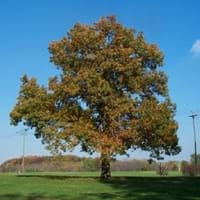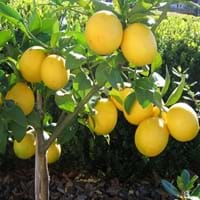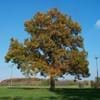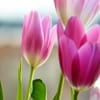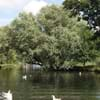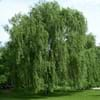Life Span
Perennial
Perennial
Origin
North America, United States, Northeastern United States, Mid-Atlantic United States, Southeastern United States, North-Central United States, Central United States, South-Central United States, Canada
Hybrid origin
Types
Japanese Evergreen Oak, Sawthorn Oak, Oriental White Oak
Not Available
Habitat
Woodland Garden Canopy
Warmer regions
USDA Hardiness Zone
4-8
9-11
Sunset Zone
2a, 2b, 3a, 3b, 4, 5, 6, 7, 8, 9, 14, 15, 16, 17
H1, H2, 8, 9, 12, 13, 14, 15, 16, 17, 18, 19, 20, 21, 22, 23, 24
Habit
Upright/Erect
Oval or Rounded
Flower Color
Red, Light Yellow, Yellow green
White
Flower Color Modifier
Bicolor
Bicolor
Fruit Color
Brown, Sandy Brown, Chocolate
Orange, Lemon yellow
Leaf Color in Spring
Green, Copper
Dark Green
Leaf Color in Summer
Dark Green
Dark Green
Leaf Color in Fall
Orange, Brown, Dark Red
Dark Green
Leaf Color in Winter
Not Available
Light Green
Leaf Shape
Lobed
Elliptic
Plant Season
Spring, Summer, Fall, Winter
Spring, Summer, Fall, Winter
Sunlight
Full Sun, Partial Sun
Full Sun
Type of Soil
Clay, Loam, Sand
Loam, Sand
The pH of Soil
Acidic, Neutral
Acidic, Neutral, Alkaline
Soil Drainage
Average
Well drained
Bloom Time
Spring
Indeterminate
Tolerances
Wet Site, Drought
Drought
Where to Plant?
Ground
Container, Ground, Pot
How to Plant?
Seedlings, Transplanting
Cuttings
Plant Maintenance
Medium
Medium
Watering Requirements
Average Water Needs, Keep the ground moist but not water-logged, Needs a lot of water initially, occasional watering once established, Water Deeply
Average Water Needs
In Summer
Lots of watering
Lots of watering
In Spring
Moderate
Moderate
In Winter
Average Water
Average Water
Soil pH
Acidic, Neutral
Acidic, Neutral, Alkaline
Soil Type
Clay, Loam, Sand
Loam, Sand
Soil Drainage Capacity
Average
Well drained
Sun Exposure
Full Sun, Partial Sun
Full Sun
Pruning
Remove branches, Remove damaged fruit, Remove damaged leaves, Remove dead branches, Remove dead leaves, Remove dead or diseased plant parts, Remove deadheads
Remove damaged leaves, Remove dead branches, Remove dead leaves
Fertilizers
All-Purpose Liquid Fertilizer, High amounts of nutrients, organic fertlizers
All-Purpose Liquid Fertilizer
Pests and Diseases
Red blotch
Aphids, Psyllids, Scale insects, Whiteflies
Plant Tolerance
Drought, Wet Site
Drought
Flowers
Insignificant
Showy
Flower Petal Number
Not Available
Single
Edible Fruit
Not Available
Yes
Fragrant Bark/Stem
Yes
Yes
Foliage Texture
Medium
Medium
Foliage Sheen
Glossy
Glossy
Attracts
Birds
Birds, Butterflies
Allergy
Hay fever, Itchy eyes, Runny nose, sneezing, Watery eyes, Whooping Cough
Acidic, Nausea
Aesthetic Uses
Not Used For Aesthetic Purpose
Showy Purposes
Beauty Benefits
Not Available
Not Available
Environmental Uses
Air purification, Nesting sites for birds, Shadow Tree, Shelter for wildlife, Wildlife
Air purification
Medicinal Uses
Antiaphonic, Antiasthamatic, Astringent, Chronic fatigue, Cold, Dysentry, Emetic, Febrifuge, Haemorrhages, Indigestion, Opthalmic, Salve, Sore Eyes, Sore throat, Tonic, Treating fever
Nutrients
Part of Plant Used
Inner Bark, Leaves, Seeds
Fruits, Leaves
Other Uses
Tannin, Used as a dye, Used as fuel, Used as insect repellent, Used for woodware
Used As Food, Used to make juice
Used As Indoor Plant
No
Yes
Used As Outdoor Plant
Yes
Yes
Garden Design
Feature Plant, Shade Trees
Container, Edible, Feature Plant, Fruit / Fruit Tree, Houseplant, Topiary / Bonsai / Espalier, Tropical
Botanical Name
QUERCUS velutina
Citrus Meyeri
Common Name
Black Oak
Meyer Lemon
In Hindi
Black Oak Tree
Meyer Lemon
In German
Schwarz Oak Tree
Meyer Lemon
In French
Noir Oak Tree
Meyer Lemon
In Spanish
Negro del árbol de roble
Meyer Lemon
In Greek
Black Oak Tree
Meyer Lemon
In Portuguese
Carvalho Preto
Meyer Lemon
In Polish
Czarny Dąb
Meyer Lemon
In Latin
Niger quercum ligno
Meyer Lemon
Phylum
Magnoliophyta
Magnoliophyta
Class
Magnoliopsida
Magnoliopsida
Clade
Angiosperms, Eudicots, Rosids
Angiosperms, Eudicots, Rosids
Subfamily
Not Available
Aurantioideae
Importance of Black Oak and Meyer Lemon
Want to have the most appropriate plant for your garden? You might want to know the importance of Black Oak and Meyer Lemon. Basically, these two plants vary in many aspects. Compare Black Oak and Meyer Lemon as they differ in many characteristics such as their life, care, benefits, facts, etc. Every gardener must at least have the slightest clue about the plants he wants to plant in his garden. Compare their benefits, which differ in many ways like facts and uses. The medicinal use of Black Oak is Antiaphonic, Antiasthamatic, Astringent, Chronic fatigue, Cold, Dysentry, Emetic, Febrifuge, Haemorrhages, Indigestion, Opthalmic, Salve, Sore Eyes, Sore throat, Tonic and Treating fever whereas of Meyer Lemon is Nutrients. Black Oak has beauty benefits as follows: Not Available while Meyer Lemon has beauty benefits as follows: Not Available.
Compare Facts of Black Oak vs Meyer Lemon
How to choose the best garden plant for your garden depending upon its facts? Here garden plant comparison will help you to solve this query. Compare the facts of Black Oak vs Meyer Lemon and know which one to choose. As garden plants have benefits and other uses, allergy is also a major drawback of plants for some people. Allergic reactions of Black Oak are Hay fever, Itchy eyes, Runny nose, sneezing, Watery eyes and Whooping Cough whereas of Meyer Lemon have Acidic and Nausea respectively. Having a fruit bearing plant in your garden can be a plus point of your garden. Black Oak has showy fruits and Meyer Lemon has showy fruits. Also Black Oak is not flowering and Meyer Lemon is not flowering . You can compare Black Oak and Meyer Lemon facts and facts of other plants too.
